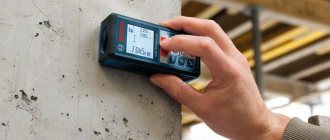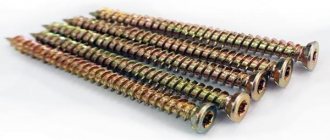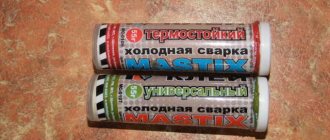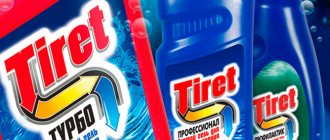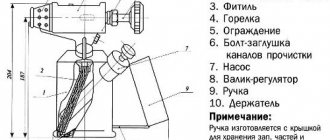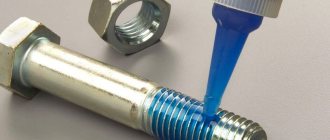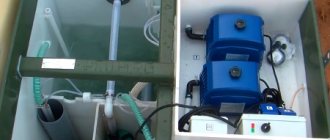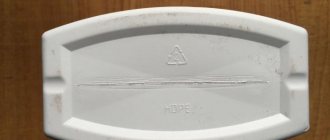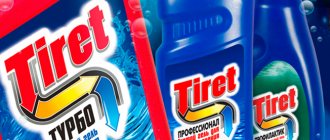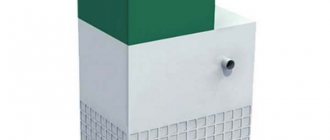Liquid plastic (two-component) is a polyurethane system that can harden very quickly. From polyurethane liquid plastic, using the method of open casting (rotation), you can produce souvenirs, create furniture decor and structural elements. Products made from liquid plastic last much longer than their counterparts made from any other materials.
The polyurethane system has a high degree of detail and is suitable for casting small parts and small decorative items.
In the Polimerika online store you can always buy liquid plastic at low prices.
Main characteristics and advantages of liquid plastic
The polymer material in liquid form is considered a semi-finished product for creating durable coatings that include synthetic components. It has many operational advantages:
- high level of elasticity;
- presence of hydro-repellent properties;
- resistance to sudden changes in temperature and humidity in the environment;
- wear resistance;
- good environmental performance;
- duration of operation;
- affordable price.
The indisputable advantage of the material is the ability to create an absolutely flat and smooth surface with a presentable appearance and a pleasant shine. If necessary, damaged areas of the coating can be quickly and efficiently restored. plastic is ideally combined with wood, metal, concrete, PVC compounds, and stone products.
How to work with polyurethane liquid plastic
To obtain liquid plastic for molds, you need to mix the two components included in the package in a 1:1 ratio. The components contained in the package can only be mixed if the filling system has warmed up to room temperature.
Before starting work, you need to shake the two components (2-3 minutes of shaking will be enough). Stir until the mixture becomes homogeneous. Mix the two components only with a wooden stick. You can mix by hand, but you can also use a mixer (in this case, you should not mix the filling system for more than 25-30 seconds).
Pour the filling into the prepared special mold and wait 20 minutes. After the specified time has passed, it is necessary to remove the finished product from the mold. Important! The mixture, freshly prepared for use, should be used within 2 minutes. Otherwise, the fill may lose some of its properties.
Injection molded two-component plastics
One of the most popular applications for liquid polymer mixtures is the manufacture of various parts by pouring the material into appropriate molds. Liquid plastic for casting is a two-component mixture consisting of a base and a hardener, which, interacting with each other, form a solid polymer mass. The material is widely used for the manufacture of such products:
- building blocks;
- façade structures;
- relief decorative elements;
- sculptures, masks and other three-dimensional artistic products;
- rollers, rollers, wheels;
- plates for lining metal structures;
- chemically resistant lining elements for containers and containers;
- medical prostheses;
- anti-vibration bushings, gaskets and attachments.
After being poured into molds, the two-component liquid plastic polymerizes and hardens, precisely repeating the smallest details of the matrix. After removal from the mold, the surface of the product can be further refined mechanically or manually.
Ease of processing makes this material popular among creative professionals.
Types and brands of injection molding polymers differ in the speed of hardening, degree of density, ductility, strength, hardness, as well as colors and level of transparency. Products obtained by pouring liquid plastic are superior in performance to products made from rubber, rubber, gypsum and concrete mixtures.
Why do we recommend buying liquid plastic in our online store?
The products of the Polimerika store, which sells composite materials, polyurethane, and high-quality silicone, are of impeccable quality.
On our website:
- interesting promotions are organized that allow the buyer to buy the desired product on favorable terms;
- you can order goods with fast delivery in St. Petersburg, Moscow and to any location in the country;
- When purchasing a product there is no need to make an advance payment.
Contact the Polimerika online store if you need a high-quality filling system at reasonable prices.
What is liquid plastic?
This material with unusual characteristics appeared on the market relatively recently, about thirty years ago. And it immediately took pride of place in the arsenal of handmade techniques due to its unique features. Combined with a rich creative imagination, it provides the widest scope for the most unexpected author's solutions, and the process of creative search is in full swing.
So what is liquid plastic?
This is a white viscous substance. Non-toxic. Of the common things, it is most similar to the familiar PVA glue. Produced:
- Transparent;
- Opaque;
- Multi-colored;
- With sparkles.
The main functional characteristic: it is an adhesive composition, which is activated by baking. Allows you to create multi-layer colorful compositions by sequentially placing layers on top of each other with heat treatment of each.
Use of adhesive properties
In its “raw” state, this thick mixture is not glue; heat is required. Ideal for joining handicrafts made from polymer clay - raw and fired, in any combination. It is also very convenient for attaching plastic elements to wood, metal, glass, and cardboard bases. Can be used as a fastening and holding agent - for example, attaching small parts to jewelry.
When using adhesive qualities, it is important to remember that fixation occurs after heat treatment. That is, the parts to be glued must be fixed in the required position during firing, and the fastening agent must be applied in a thin layer so that they do not slip. After exposure to temperature, the layer may lose transparency, acquiring a white tint. You can tint the whitened part by mixing a piece of the desired tone. An additional option is that it can be used as a varnish coating.
Use in conjunction with hard polymer clay
The appearance of a flowing substance has significantly expanded the possibilities for craftsmen working in this technique. The combination of these two varieties brought the author's masterpieces to a new creative level. The addition of a viscous component allows you to soften hardened pieces and restore their quality. The mixture is very convenient as a kind of putty for covering up defects in finished products. The ability to bond and additionally strengthen components is widely used. Amazing projects are also born when experimenting with multi-colored layers.
Creating images with a 3D effect
Another level of new development is the creation of decorative paintings. Illustrations from paper media are transferred to a gel plane, creating unusual compositions of stunning beauty with a 3D effect. Reproductions from newspapers and magazines with high-quality resolution, black-and-white and color photographs, oil paintings, pencil sketches (pencils must be high-quality), pictures made on a laser or inkjet printer may be suitable for this.
Baking will take 15 minutes at a temperature of 130° C (there may be nuances for different varieties). Two main technologies have been developed for transferring drawings:
- You can apply the source material directly to the sketch, let it sit for a few minutes and put it in the oven. At the end of firing, remove from the oven and apply a damp cloth (or put it in water) for two to three minutes. After the paper source gets wet, carefully remove it. The resulting flexible picture, filled with plastic mass, can be attached to a solid base.
- The starting material is spread on the glass. The illustration is placed on the gel component with the painted side, carefully smoothed out and pressed onto the plastic substance. The resulting complex is aged for five minutes, then placed in the oven. After 15 minutes, take it out and immediately, before the workpiece has cooled, use a knife to very carefully separate the paper. Then the glass with the attached gel layer is cooled. By separating it, you get a beautiful plastic image.
Illustrations made using the first method are more matte; in the second case, the coating will be shiny.
Formation of the palette
The initially colorless mass can be colored by adding coloring elements to it. These can be dry pigments, watercolor or oil paints, concentrated inks, mica powder, acrylic dyes. Coloring components should be added gradually, stirring thoroughly, in small doses - the substance quickly acquires color.
Each type of additive imparts its own special properties, which are in demand for different purposes. So, mica adds thickness, and oil dyes, on the contrary, thin it out. Adding acrylic dyes under high heat results in a special texture due to the appearance of irregularities and air bubbles on the surface. If more pastel and pure colors are needed, then concentrated ink or watercolor is used. Adding mica powder gives a metallic shine. Coloring an initially colorless composition provides tempting prospects for experimentation in obtaining all sorts of shades and textures.
The colored gel has a very wide range of applications:
- You can paint figures made of polymer clay, obtaining a reliable and bright coating;
- Filling patterns on dense varieties of raw materials. When working with a baked base, a contour is cut out along it. Then the resulting grooves are carefully filled with the chosen color, and the layer is fired again. If a “raw” workpiece is processed, then the intended texture is applied to it, the recesses are filled with painted plastic and the product is placed in the oven;
- Imitation of enamel finish. The "enamel" picture is drawn and baked onto a hard plastic backing. The resulting artistic panels are indistinguishable from genuine enamel both visually and to the touch. Ideal for performing protective and decorative functions;
- Formation of a mosaic. Small shaped pieces of molded “mastic” are glued in a given order onto a solid base using gel glue. After firing, the finished mosaic is filled with a colored component and fired again;
- Color layers can be alternated, choosing very unexpected, exclusive combinations;
- Imitation of patina. By choosing the appropriate tones, you can create a patina effect;
- Imitation of stained glass. A very beautiful and popular way to use a fluid mass. From a dense substance, a relief outline of the selected sketch is laid out and baked on a glass sheet. Then the relief is filled with multi-colored plastic and exposed to high temperatures again;
- Marble color. To achieve this effect, take a plastic base (glass also works well), on which a thin layer of gel is applied. Then, with a soft brush, strokes and dots of different colors are applied to the plane. And the finishing touch: with a sharp needle, these strokes are connected with chaotic grooves, imitating the surface of a marble slab.
Where can I buy
You can purchase liquid plastic in our online store. This will significantly save your time, because you won’t have to waste it searching. You don't have to worry about the quality and cost of the product. We work only with trusted suppliers. You can buy raw materials from us brands: Artifact, Fimo, Cernite, Sculley.
Have fun creating!
You may also be interested in: Polymer clay for beginners Rules for storing polymer clay Can needlework become your main job?
Advantages and disadvantages
Liquid plastic adhesives have a lot of advantages. Despite their recent appearance on the market, they have firmly gained popularity among window manufacturers.
The use of glue ensures diffuse welding (mutual penetration) in the joint area, resulting in the formation of a single part without changes in color or structure. This is achieved due to the fact that the liquid plastic has approximately the same composition as the PVC profiles themselves.
Other advantages of the series:
- resistance to precipitation, light, heat, ultraviolet radiation,
- absence of fungus and mold at the joint, even with high humidity,
- excellent strength, seam strength,
- environmental safety, harmlessness to humans,
- guarantee of color retention for 15 years (the seam will remain white or transparent),
- rapid hardening, the ability to quickly put the product into operation,
- good sealing of seams, protection from cold, drafts,
- no absorption of odors,
- the ability to use detergents,
- resistance to sub-zero temperatures.
The disadvantages include too rapid setting of surfaces. You should immediately position them correctly, since there will be no time to correct the location. Another disadvantage is the need for the product to be completely dry during operation; only after hardening will the joint be resistant to moisture.
The disadvantage is that some adhesives are difficult to separate from surfaces, which requires purchasing a special solvent. Liquid plastic does not work well on porous surfaces and is not suitable for producing elastic, moving seams.
Another serious disadvantage is the easy ignition of materials - you must work with them in strict compliance with safety measures.
Description and scope
When installing plastic windows made of PVC, in most cases it is necessary to install slopes, which help hide defects that arise when the old window is deformed, give the structure a beautiful, harmonious look, and create an optimal level of thermal insulation.
Slopes should be used to protect against dust, dirt, noise, and create a reflective surface, thereby improving lighting. The joint with slopes and other parts must be sealed. For this purpose, you can use Cosmofen liquid plastic.
The products are one-component formulations with low viscosity. They set quickly, so the parts should be fixed correctly right away. The German manufacturer Weiss included special components that provide moisture resistance and ultraviolet protection.
The resulting seam imparts stability to plastic joints and has the following qualities:
- resistance to negative temperatures,
- low thermal conductivity,
- high resistance to external damaging factors.
The use of window glue is justified for securing any technological seams and attaching auxiliary elements - drains, protective strips, flashings. Using liquid plastic, you can glue products not only from polyvinyl chloride, but also from hard plastic, polystyrene, plexiglass, polycarbonate and some other types of plastic. Liquid plastic can be used to seal plumbing pipes and finally secure advertising banners.
